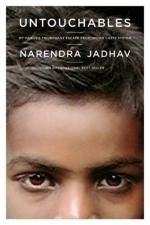
|
| Name: _________________________ | Period: ___________________ |
This quiz consists of 5 multiple choice and 5 short answer questions through Section 4: "Part Four: The Tentacles of Caste".
Multiple Choice Questions
1. On page 12, Wilkerson says that some contagions can only be managed with "vigilance." How is she proposing they should be managed?
(a) With constant watchfulness.
(b) With great speed.
(c) With careful thoroughness.
(d) With brute force.
2. In "Chapter Six: The Measure of Humanity," Wilkerson says that actions that reinforce the caste system are "autonomic." What is the best meaning of this word in this context?
(a) Autonomous, occurring without social or environmental input.
(b) Automatic, occurring without conscious thought.
(c) Spontaneous, occurring without planning.
(d) Involuntary, occurring without choice.
3. On page 59 of "Chapter Five: 'The Container We Have Built for You,'" when Harold Hale's daughter is about to return to school after a visit with a friend's family, what is the grandmother's response?
(a) "We should never have had you in our home."
(b) "Colored folks around here have better manners."
(c) "Why on earth would you want to go back there?"
(d) "There was a time when I could have made you stay."
4. In the page 15 sentence "An old house is its own kind of devotional, a dowager aunt with a story to be coaxed out of her," the idea that the house has a story to tell is an example of what literary technique?
(a) Metonymy.
(b) Apostrophe.
(c) Litotes.
(d) Personification.
5. In "Chapter Fourteen: The Intrusion of Caste in Everyday Life," who follows and questions Wilkerson when she is in an airport?
(a) Airport security.
(b) Two white people with no policing authority.
(c) The police.
(d) The Drug Enforcement Agency.
Short Answer Questions
1. In "Chapter Six: The Measure of Humanity," what reason does Wilkerson give for most people's participation in the American caste system?
2. Besides the caste systems in India and the United States, which other caste system does Wilkerson say that she will focus on?
3. In "Chapter Eleven: Dominant Group Status Threat and the Precarity of the Highest Rung," Wilkerson discusses biases that occur without thought. What is this kind of bias called?
4. In "Pillar Number One: Divine Will and the Laws of Nature," what is Wilkerson's central claim?
5. About how many years did American slavery last?
|
This section contains 436 words (approx. 2 pages at 300 words per page) |

|




